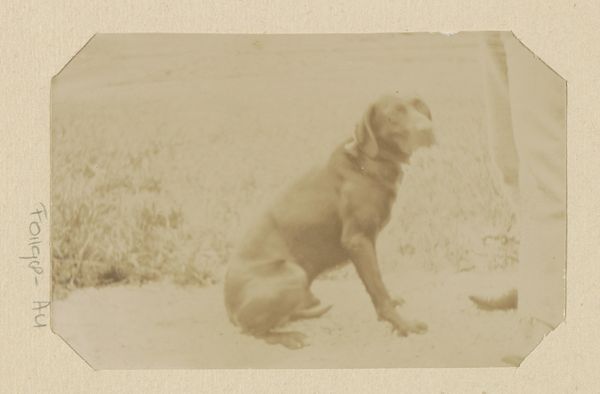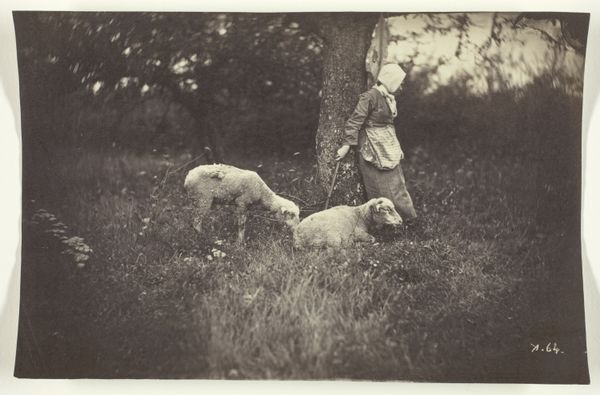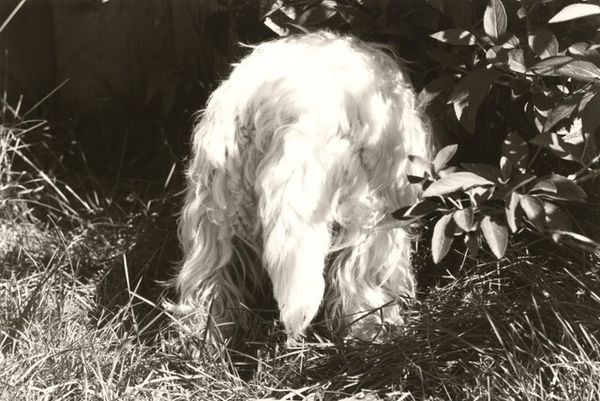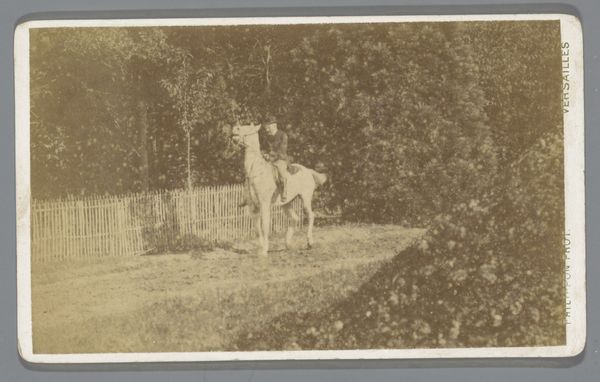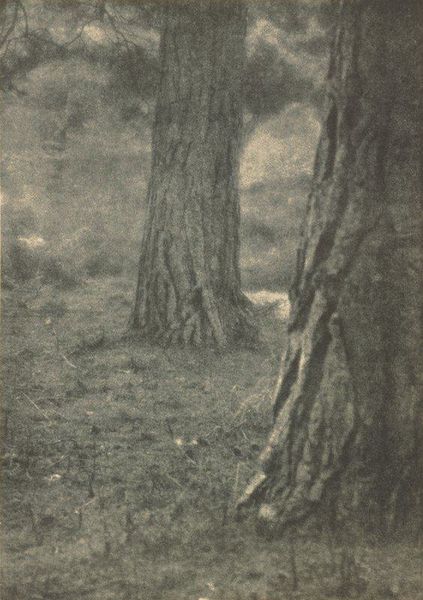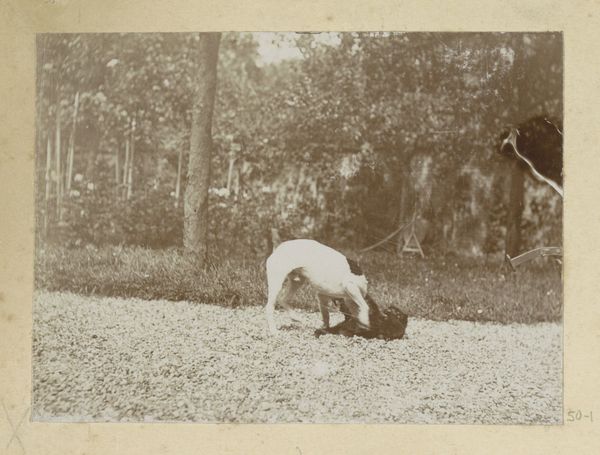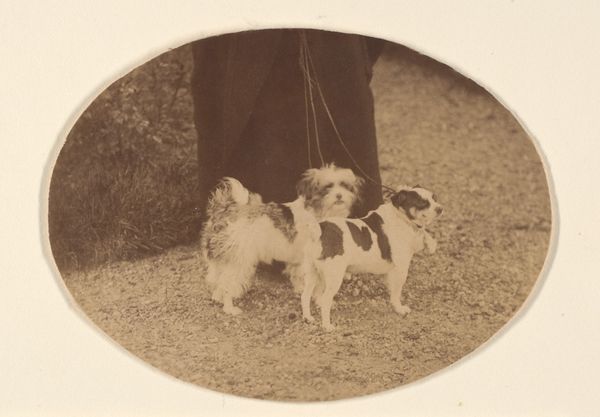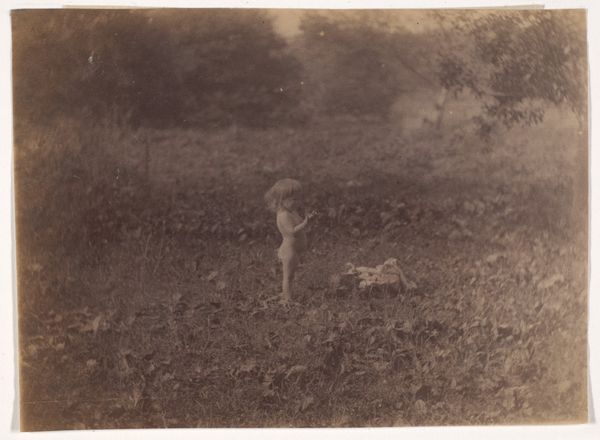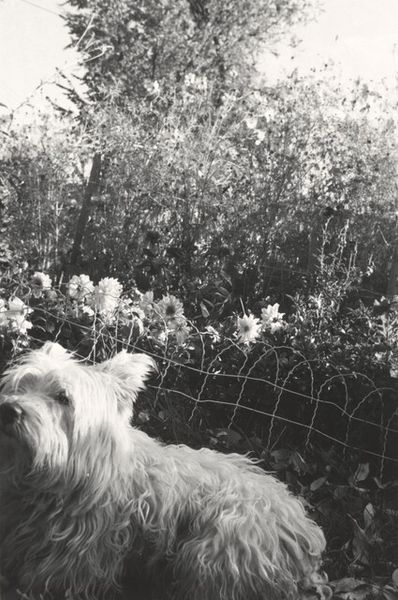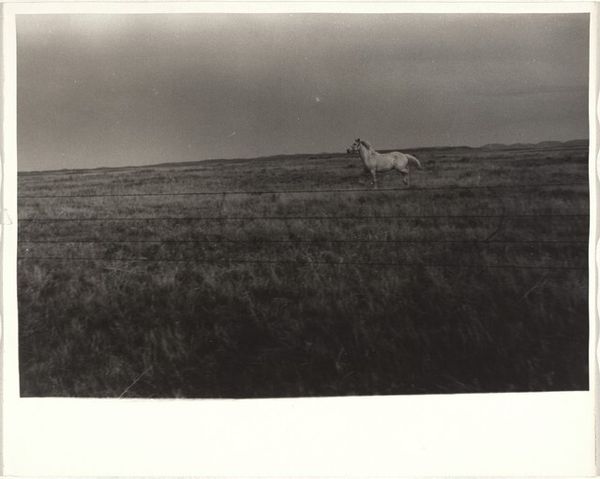
gelatin-silver-print, photography, gelatin-silver-print
gelatin-silver-print
landscape
photography
gelatin-silver-print
realism
Dimensions: 3 1/16 x 5 1/4 in. (7.78 x 13.34 cm) (image, sheet)15 1/16 x 10 3/16 in. (38.26 x 25.88 cm) (mount)
Copyright: No Copyright - United States
Curator: This silver gelatin print, currently held at the Minneapolis Institute of Art, is an untitled landscape study captured by Rudolf Eickemeyer in 1921. Editor: Well, "study" feels... sterile. It’s pure countryside daydream. That dog nose-down in the grass – I bet you can practically smell the summer haze just looking at it. Curator: Yes, there is a definite sense of immediacy. Eickemeyer's masterful manipulation of light and shadow creates a remarkable tonal range. Note how the sharp focus on the dog contrasts with the blurred background, emphasizing the foreground subject and creating depth. Editor: Blurred edges are exactly where the story is. Makes me wonder, what caught its attention? What's in the grass? Also I love the balance...the animal is smack in the middle and slightly in the left and then bam the tail offers something asymmetrical to counter its centeredness. Very grounding but in a fun way. Curator: It’s a classically composed landscape, fitting squarely into the realism movement despite its somewhat hazy softness. Eickemeyer's placement of the animal also adheres to established principles of pictorial balance and emphasis. Editor: I can see that! It is amazing how photographers back in the day knew exactly the precise rule of the third. To me, there's still something so moving, almost spiritual, in how simply Eickemeyer renders this everyday scene into something so tender. Curator: I would argue that this sense of tenderness is an artifact of our contemporary sentimentalism. While emotionally affecting, its formal merits rest on its careful construction and precise tonality within established artistic frameworks. Editor: And that’s the beauty of it, isn’t it? A good work invites so many different worlds. What speaks to the dog in the artist speaks back to the audience, so whatever we find, must be, if not right, then very close.
Comments
No comments
Be the first to comment and join the conversation on the ultimate creative platform.
